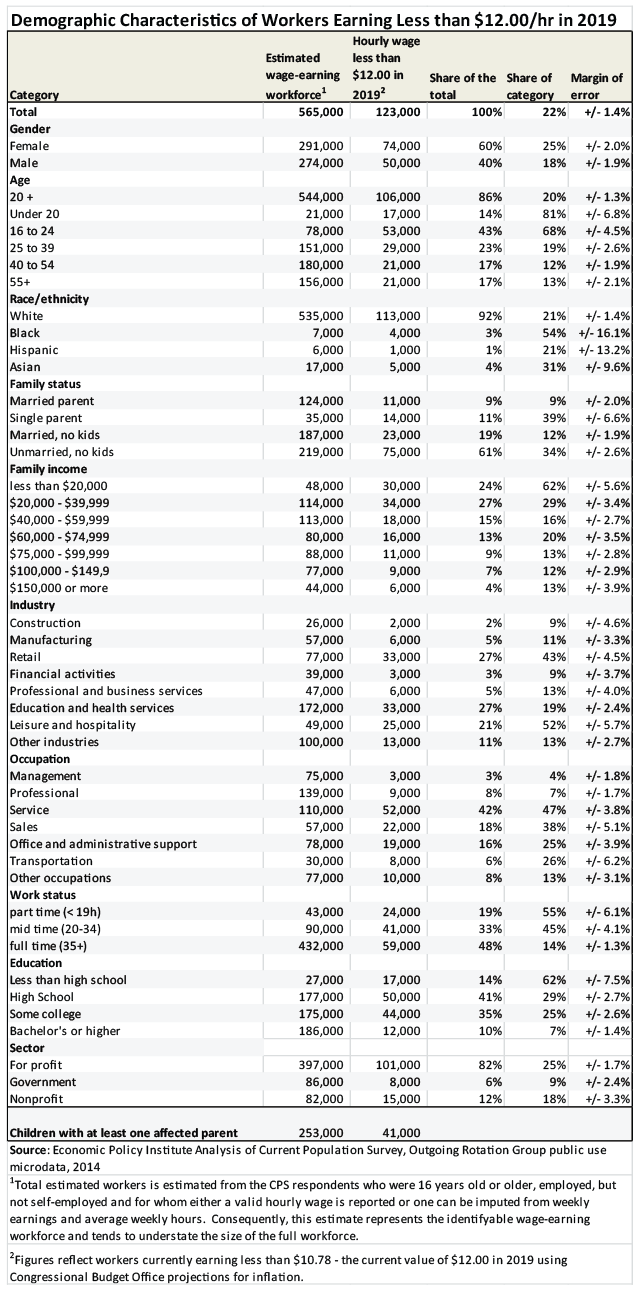Instead of informing yesterday’s public hearing on a raft of bills that would raise Maine’s minimum wage, the Maine Department of Labor chose to present a slew of unhelpful facts in an attempt to persuade lawmakers to vote against common-sense legislation to raise wages for tens of thousands of low- and middle-income Maine workers, increase demand for goods and services in Maine’s economy, and reward work.
In wide-ranging testimony, Julie Rabinowitz, the communications director of the department, relied on carefully selected statistics about minimum wage workers to cast doubt on how many workers raising the minimum wage would affect and what the demographic characteristics of those workers are.
Rabinowitz’s written testimony reports that there about 20,000 workers earning the state’s minimum wage and describes these workers as disproportionately young and of limited education.
Here’s the problem: the number of workers who make exactly the minimum are a small fraction of the total number of workers any substantial increase in the minimum wage would actually affect.
This has become a pattern with the LePage Administration – target a subset of the population that might benefit from a particular policy change that might not seem as deserving or sympathetic in order to erode support for a proposal that actually benefits a much larger segment of the population.
Take LD 843, for example, which would increase the minimum wage from $7.50 to $12 per hour over the next four years. In order to understand how many workers this increase would affect and who they are— their ages, their education levels, etc.—we need to look at all the workers who we estimate will be making less than $12 per hour in 2019. Just looking at workers who make exactly the current minimum, as the Maine Department of Labor did yesterday, tells us nothing about impact of LD 843 upon workers and their families.
Thanks to analysis of US Census Bureau Current Population Survey data by the Economic Policy Institute (EPI), we have good estimates of how many workers an increase in the minimum wage in LD 843 would directly affect. Gradually increasing the minimum wage to $12 per hour by 2019 would give over 120,000 Maine workers—more than a fifth of the state’s workforce—a raise. That actually underestimates the total number of workers who would be affected because workers who make slightly more than the proposed minimum would also likely get a raise indirectly as employers reset their wage scales to reflect the new minimum.
According to EPI, here are some of the characteristics of workers who would be directly affected by an increase in the minimum wage to $12 per hour by 2019:
- 60% of the workers who an increase in the minimum wage to $12 dollars an hour would directly affect are women.
- 85% are over the age of 20.
- 75% work in service, sales, and office and administrative support occupations.
- 75% work in three major industries: retail, education and health services, and leisure and hospitality.
- 40,000 Maine children have at least one parent who would get a raise from this legislation.
Again, these figures should be considered underestimates since they don’t count workers who would be likely to get a raise indirectly as employers reset their wage scales.
EPI has an excellent track record of analyzing how many and what types of workers would be affected by changes to the minimum wage. Their analysis of the impacts of raising the federal minimum wage to $10.10 per hour produced results that later corroborated by the Congressional Budget Office. EPI’s analysis is far more instructive to the debate over the real advantages of raising the minimum wage than the inadequate facts MDOL chose to highlight yesterday.



